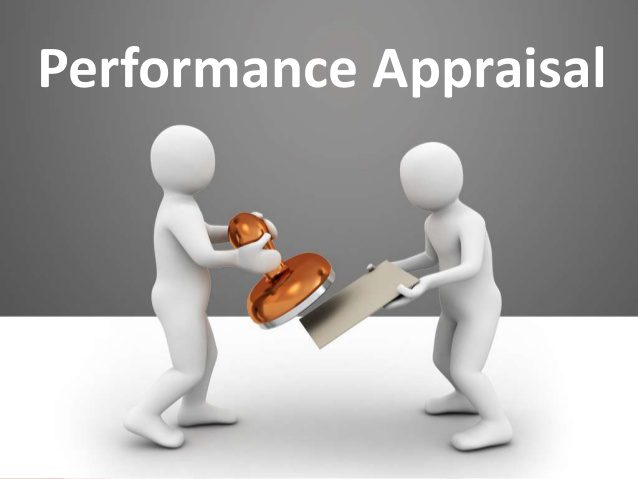Much has been written about conducting effective Performance appraisals, so why is the year-end reviews till approached with a sense of dread by most employees and managers?
Given below are some reflections gathered from stints as a HR business partner dealing with ‘escalations’ from disgruntled employees and an experience when I was in charge of an initiative around ‘Re-imagining people processes’ that sought to transform the experience around performance appraisals, potential identification and related rewards in a very large multinational organisation.
Ignoring the basic elements of the appraisal process leads to an ineffective year end process.
By the basic elements I mean – the ‘SMART’ goal setting, the need for frequent 2-way communication between manager and employee; ensuring an individual has visibility how his contribution affects the larger organisational purpose; the need to have trained assessors and a neutral facilitator when there are misunderstandings and so on.
In several organisations the appraisal is viewed as a ‘HR’ ritual but the huge impact it has on the well being and productivity of employees ought to make it a key measure of organisational productivity. Employees who turn cynical after appraisal feedback may continue to exist as employee ID numbers, but are no longer engaged or committed to organisational goals. In my opinion – much worse than the cost of attrition (and replacement) is the cost of a bitter employee who stays back due to financial or other compulsions and contributes at 50 per cent of his/her former potential.
What are some ways an organisation can foster a climate where productive appraisals thrive?
Role Model Managers
Despite elaborate training rituals to train first time managers on the art and science of conducting performance appraisals, the longer lasting lessons are what managers themselves experience.If a manager has been coached by an effective people manager, there are higher chances s/he will imbibe the lessons much better and ‘pay it forward’. Or if the learning modules during training include opportunity to perform in meaningful role plays, there is a good chance of truly inculcating practices that help foster better performance and productivity.
Foster a Two-way Process
While most organisations claim to promote a two-way communication between manager and employee,the reality usually is a culture of ‘the boss is always right’. There can be a tremendous shift in the balance of perceived power in the relation if there is a robust system of feedback about people managers’ behaviour during appraisals. Knowing that the managers performance as a performance manager is also being evaluated acts as a check to prevents autocratic managers ignoring true performance in place of rewarding their ‘circle of devotees’.
While most organisations claim to promote a two-way communication between manager and employee,the reality usually is a culture of ‘the boss is always right’. There can be a tremendous shift in the balance of perceived power in the relation if there is a robust system of feedback about people managers’ behaviour during appraisals. Knowing that the managers performance as a performance manager is also being evaluated acts as a check to prevents autocratic managers ignoring true performance in place of rewarding their ‘circle of devotees’.
360-Degree Appraisals/Reverse Feedback
Well-designed 360 surveys also allow the focus of the appraisal to balance between the ‘What’ and the ‘How’. No longer is it acceptable to merely achieve hard numbers at the cost of customer or employee satisfaction. Qualitative feedback on the way the employee achieved those targets also plays a role.If a functional specialist who graduated to become a manager continues to operate as an individual contributor, a system of reverse feedback can capture the trend before it leads to a team that becomes dysfunctional.
Span of Control
While this is often taken for granted as a ‘small operational’ topic, I have seen many occasions where the large span of control is at the root of the poor quality of performance appraisals. A manager seeking to do justice to a team larger than 10 direct team members is attempting to walk on water. Not only is it tough to gather realistic data, the regular catch ups become next to impossible. And the year end conversation ends up being a tick in the box and not an invigorating career conversation.I have participated in many round tables or ‘moderation meetings’ where the performance managers’ summary of his team members performance is a ‘copy-paste’ of that of 15 others. No wonder the end employee discounts the value of individualised feedback.
Critical Incidents
A veteran people manager was known to have a hard-bound red diary which was pulled out at regular intervals during the year and made its presence felt during the year end discussion. Within it were dutifully recorded all the highs and lows of the team members’ performance. While today we have the digital equivalent of the red diary in the arsenal of most managers, what tends to be missing is the rigour of the habit of recording these incidents -be it a wonderful display of peak performance or a missed opportunity. This would help the team member reinforce what went well and realise what could be improved and help the manager ‘justify the final data driven rating’ rather than make it appear like a subjective assessment.
Blame It on the Tool
Organisations today have a variety of tools ranging from home-grown ones to modern, integrated tools developed by international experts. The tool is only as good (or bad) as the set of leaders who use it. After all the tool is not yet an AI or algorithm-based assessor of performance that can replace a human manager’s judgement. It might be worthwhile to enhance the coaching skills of the manager rather than spend millions on replacing tools that are merely a prop to the process.
The Rating Scale
Most organisations spend a lot of effort attempting to convince employees that the median rating is worth its weight in gold whereas employees continue to aspire to avoid the tag of the ‘solid performer’ status because of the associated increments and bonus. In the experiment I participated in there were efforts to remove focus from the annual rating to a long-term view of performance. While there is a stigma and glory attached to certain ratings, if we take a long-term view of performance to fix increments and use other forms of recognition to emphasize right behaviour, it might remove some of the angst around the year end appraisal process and make it more effective.









